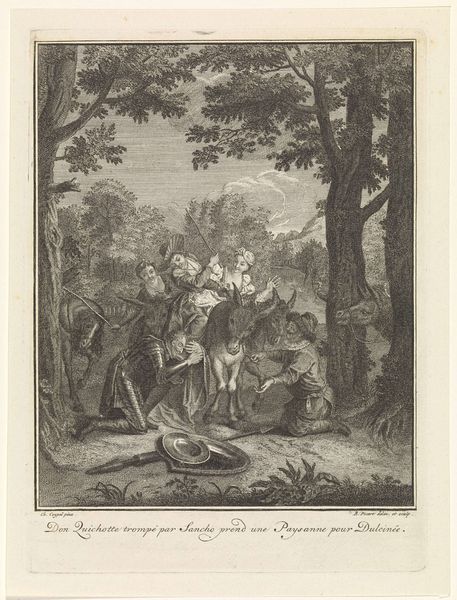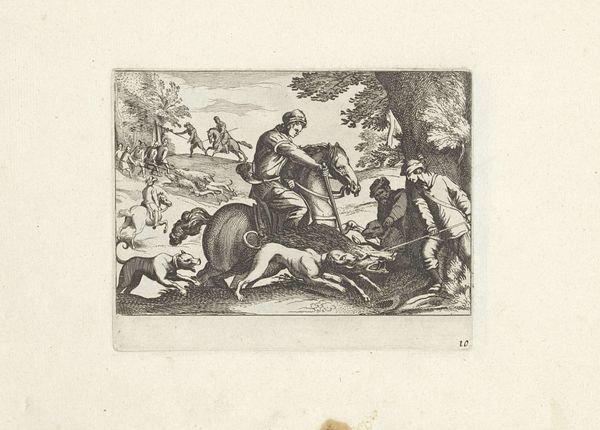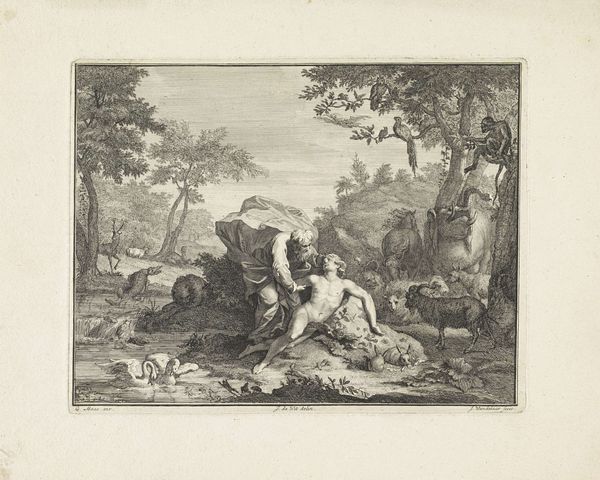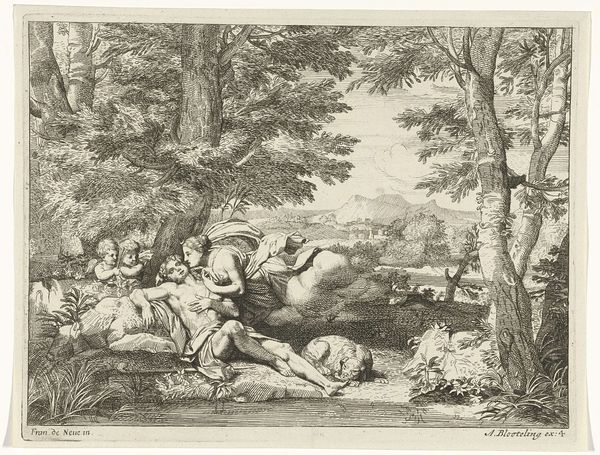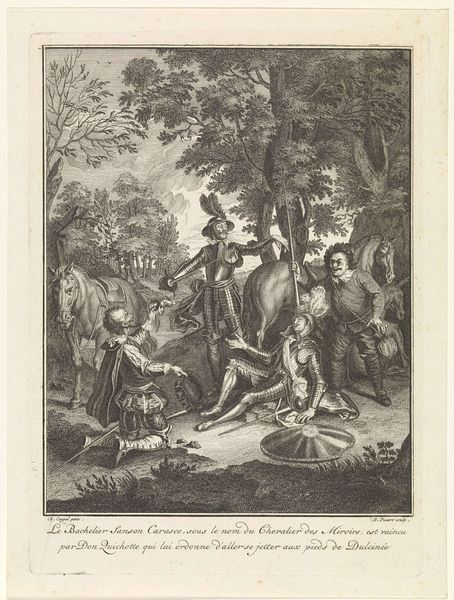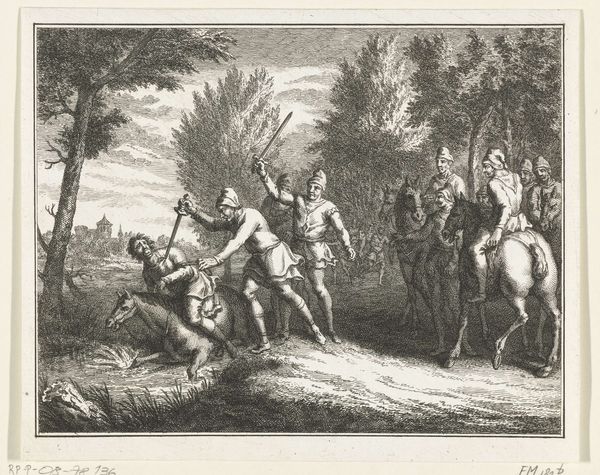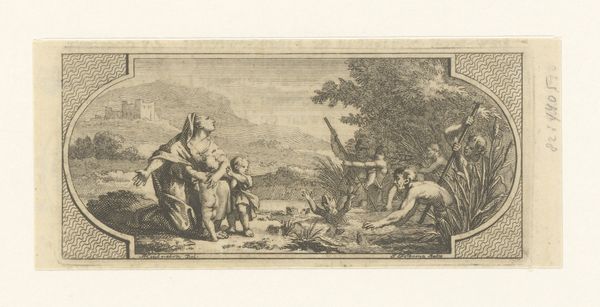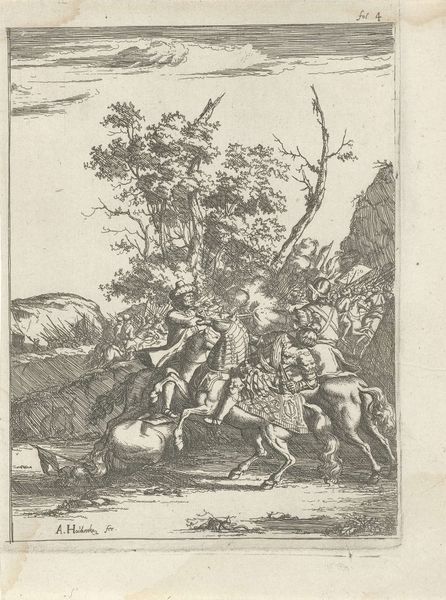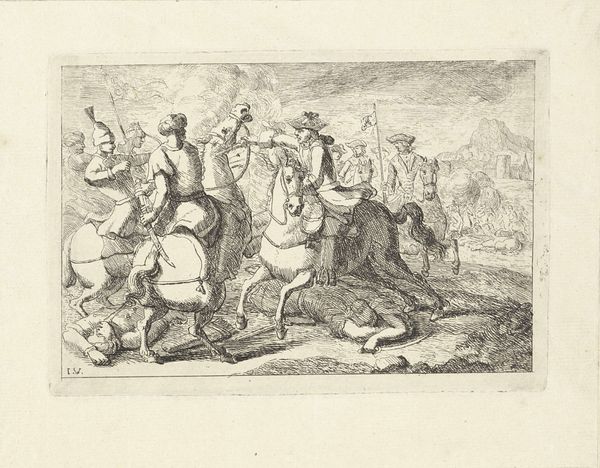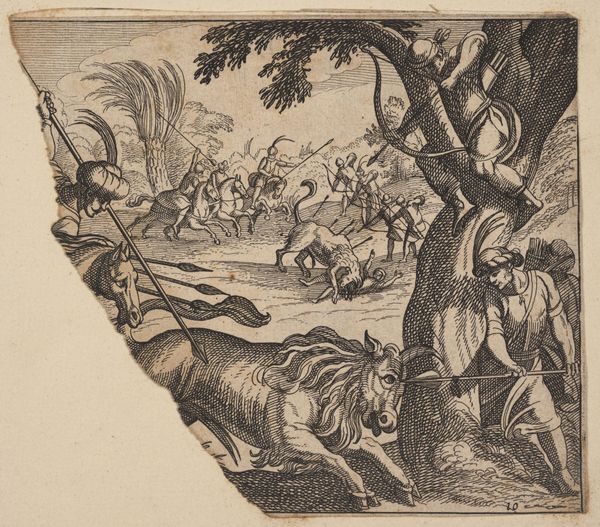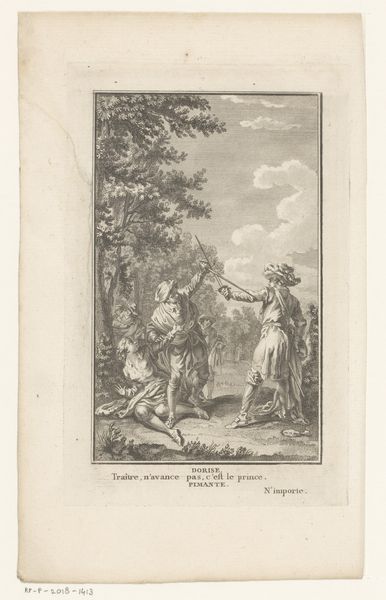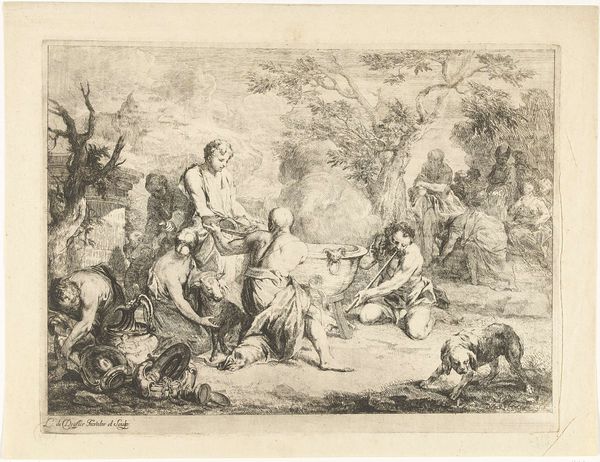
print, engraving
#
baroque
# print
#
old engraving style
#
figuration
#
genre-painting
#
history-painting
#
engraving
Dimensions: height 116 mm, width 170 mm
Copyright: Rijks Museum: Open Domain
Curator: The "Cavaleriegevecht met drie ruiters", or Cavalry Battle with Three Riders, a print by Johannes Verhoek created sometime between 1700 and 1800, strikes me immediately as a scene of high drama and chaos. Editor: I agree. It's rendered with incredibly fine lines. The density and contrast create an almost frenetic energy. It's Baroque in its intensity but feels somehow unresolved. Curator: Yes, the Baroque style certainly lends itself to such dramatic displays. Consider the figures themselves. The fallen man and horse draw us in immediately; figures of vulnerability caught beneath the spectacle of combat. Editor: Structurally, the foreground figures certainly anchor the eye, drawing us through to the looser, less defined figures further back, an intentional receding of detail which increases the sense of depth and space. But what about the gesture and attire? It’s quite elegant despite the conflict. Curator: Well, if we consider these horsemen in the light of European military history, it suggests the artist wishes to examine concepts such as chivalry, bravery, but also the horrors of war. Each figure is positioned, whether by design or accident, to contribute to the greater story. The weapons are being held up, but does that mean victory, defeat or ceasefire? Editor: The tonal range is interesting too. It really manipulates light and shadow effectively to emphasise movement and enhance that tension, all while employing the rigid formality one sees often in historical prints like this. It’s the dichotomy of order and chaos that’s interesting to me. Curator: That play of dark and light could equally represent the moral ambiguity often inherent in such conflicts. Are any of these figures inherently good or evil? It challenges us to look beneath the surface. Editor: Perhaps this unresolved drama is, in itself, the entire purpose, making the viewer a participant to create meaning where none explicitly exists. Curator: Perhaps it leaves us questioning how war persists and reinvents itself over time in our collective psyche, if we see the details for what they could suggest as signs and signals of meaning that has endured beyond the frame of its creation. Editor: Precisely! I believe we’ve both gotten something unique out of this print; an experience with lingering meaning about order and disruption, narrative and form.
Comments
No comments
Be the first to comment and join the conversation on the ultimate creative platform.
